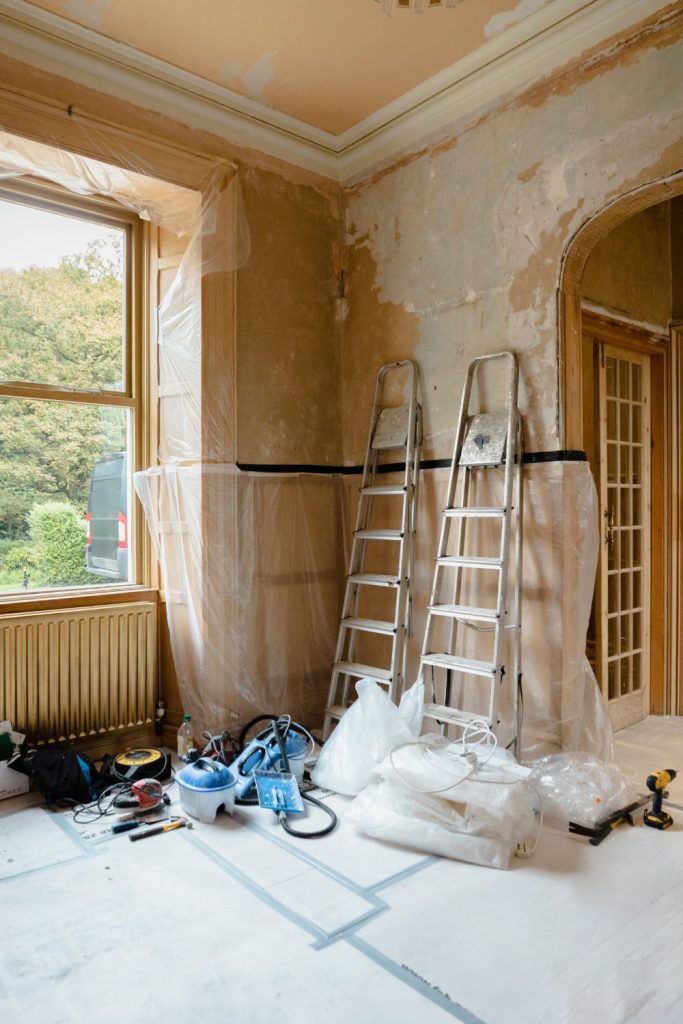Sustainable home renovation is more than just a trend; it’s a movement toward making our living spaces more eco-friendly and energy-efficient. As the awareness of environmental issues grows, homeowners are looking for ways to reduce their carbon footprint while enhancing the comfort and functionality of their homes.
This article explores practical and effective sustainable home renovation ideas that can provide you with the inspiration and knowledge needed to embark on your eco-friendly home improvement journey.
Without further ado, let’s discuss further.

Sustainable Moving and Renovation Process
When planning a sustainable renovation, it’s essential to think about the entire process, including the move. Hiring local movers can significantly contribute to a seamless and eco-friendly transition. Utilising local moving services ensures that you are supporting local businesses while benefiting from their expertise in navigating the area.
Some professionals, such as Bergen County Movers offer green moving services. This includes using reusable packing materials, offering packing supplies made from recycled content, and properly disposing of any unwanted items or materials in an environmentally responsible way.
Talk to your moving company about minimising their carbon footprint, which can include optimising routes to reduce fuel usage and offering packing materials that are reusable or recyclable.
Energy-Efficient Upgrades
One of the most impactful ways to make your home more sustainable is through energy-efficient upgrades. This not only helps reduce your carbon footprint but also results in significant cost savings on energy bills. Start with the basics: upgrading to energy-efficient windows and doors.
These improvements help maintain indoor temperatures, reducing the need for heating and cooling. Additionally, consider installing a programmable thermostat. This allows you to control your home’s temperature more precisely, ensuring that energy is not wasted when you’re not home.
Another essential upgrade is insulation. Proper insulation in your walls, attic, and floors can dramatically reduce energy loss. Materials such as cellulose, recycled denim, and sheep’s wool are excellent sustainable choices. They are not only effective insulators but also environmentally friendly.
Lighting is another area where significant improvements can be made. Switching to LED bulbs reduces energy consumption and lasts much longer than traditional incandescent bulbs. Moreover, incorporating natural light into your home design can reduce the need for artificial lighting. Skylights and larger windows not only brighten up your home but also provide warmth during the colder months.
Lastly, consider investing in solar panels. While the initial cost may be high, the long-term benefits are substantial. Solar panels can generate a significant portion of your home’s energy needs and, in some cases, even produce surplus energy that can be sold back to the grid.
Eco-Friendly Building Materials
Choosing eco-friendly building materials is a crucial step in any sustainable home renovation. These materials not only reduce the environmental impact of your project but also contribute to a healthier living environment.
Start by considering reclaimed and recycled materials. Reclaimed wood, for instance, can be used for flooring, cabinetry, and furniture, adding a rustic charm to your home while reducing the demand for new lumber.
Recycled metal and glass can also be incorporated into various design elements, from countertops to light fixtures.
Bamboo is another excellent option for sustainable building. Known for its rapid growth rate and durability, bamboo is an eco-friendly alternative to traditional hardwood. It can be used for flooring, cabinetry, and even wall coverings.
Similarly, cork, harvested from the bark of cork oak trees, is a renewable resource that provides excellent insulation and a unique aesthetic. Cork flooring is not only sustainable but also comfortable underfoot and resistant to mold and mildew.
Water Conservation Techniques
Water conservation is a critical aspect of sustainable home renovation. Implementing water-saving techniques can significantly reduce your home’s water usage, leading to both environmental and financial benefits. Start with the bathroom, which is one of the largest consumers of water in any home. Installing low-flow showerheads, faucets, and toilets can dramatically reduce water usage without compromising performance.
Consider incorporating a rainwater harvesting system. These systems collect and store rainwater for various uses around your home, such as irrigation and toilet flushing. This reduces your dependence on municipal water supplies and lowers your water bills.
In the garden, opt for native plants that are well-suited to the local climate and require less water. Xeriscaping, or landscaping with drought-tolerant plants, can create a beautiful and sustainable garden. Additionally, installing drip irrigation systems ensures that water is delivered directly to the plant roots, minimising evaporation and water waste.
Inside the home, consider upgrading to water-efficient appliances. Modern dishwashers and washing machines use significantly less water than older models. Look for appliances with the WaterSense label.
Conclusion
Embarking on a sustainable home renovation is a rewarding endeavour that benefits both the environment and your wallet.
By implementing energy-efficient upgrades, prioritising sustainable moving and renovation processes, and adopting water conservation techniques, you can create a home that is not only beautiful and functional but also eco-friendly.
These ideas provide a foundation for making thoughtful and impactful changes that contribute to a more sustainable future. As you plan your renovation, remember that every small step counts toward creating a greener, healthier living space for you and future generations.




